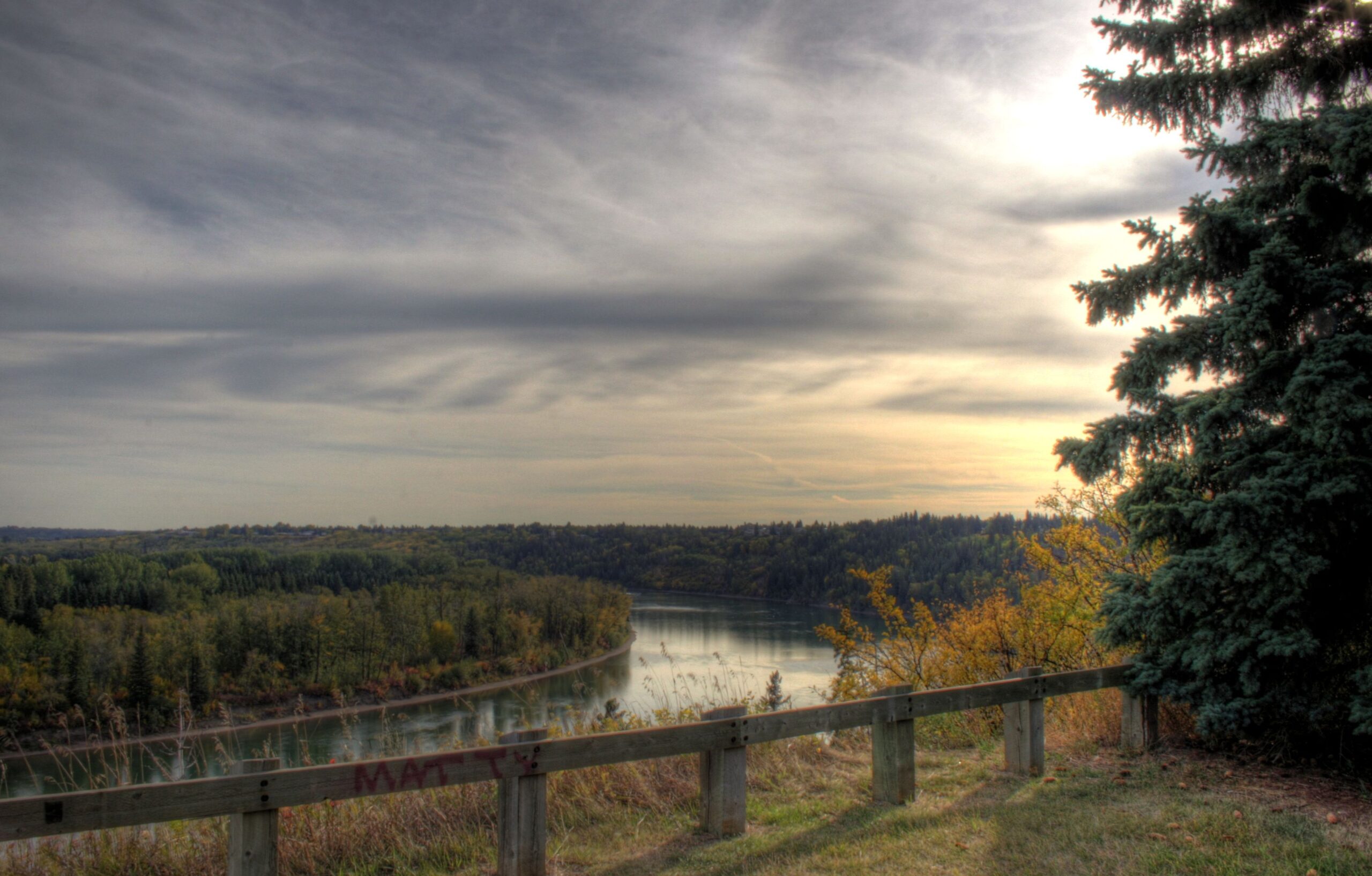By Amy St. Amand
The River Valley is one of Edmonton’s natural wonders, but increasing calls for preservation has led to disagreements about how the urban park should be used. The city has updated its proposed legislation for the Ribbon of Green–a longstanding initiative outlining what activities are allowed and where.
The first Ribbon of Green was proposed in 1990, and in 2020, the city amended the plan to include the southwest and northeast reaches of the River Valley. According to the Ribbon of Green SW + NE Plan, the River Valley was zoned into three different areas of varying levels of preservation efforts. Conservation would allow for all types of trail use, including foot traffic and cycling. On Active/Working Landscapes, activities like festivals, farms, and boat launches could occur. But the most controversial zone, Preservation, restricts usage to “foot-base travel on natural trails only,” according to the city’s website.
However, the Edmonton Mountain Biking Alliance (EMBA) has problems with the current zoning, and is worried about how the plan may progress and change the landscape of cycling in Edmonton. Their website estimates that 90% of the current singletrack trails now fall in preservation zones, making mountain biking prohibited.
But EMBA argues that the Ribbon of Green “unfairly condemns mountain bike traffic in preservation areas where other foot traffic is permitted.”
According to Joseph Yurkovich, EMBA president, cycling in the River Valley is no more harmful than foot traffic. Ensuring that trails are well-built and well-maintained is more important to minimizing impacts.

“That’s the part that we are trying to make known. Any human activity in a natural area is going to be impactful…the impacts of cycling and foot traffic are essentially on par. There’s not a lot of difference. There have been a number of papers over the years that come to essentially the same conclusion.”
But the problem is not just with cyclists being unable to ride on trails–under the current Ribbon of Green guidelines, they are also unable to maintain them. EMBA also works with partners to maintain many of the popular singletrack trails in the River Valley. But, because many of these trails are zoned for preservation, they’ve been unable to maintain many of them for several months.
“If there’s a pothole, we fill it. We make sure that trails that people create to go around those potholes are closed off…when we put our proposal in to the people we work with at the city [to do maintenance on a trail], they came back and said, ‘urban planning has just pointed out to us that [that trail] is in a preservation area, so you can’t do any maintenance there.’ Luckily last year was a really dry year, so any rainfall on the natural surface trails got soaked up,” said Yurkovich.
“The plants didn’t stop growing. So that reduces sightlines and makes it a little more dangerous for people. ”
Currently, the city plans to do an “on-the-ground” assessment to determine which areas need to be restricted to foot traffic, and which can be opened up to the public. But this leaves mountain bikers to the wayside until the assessment is finished.
“That assessment would start in 2023, and it will take a while to do an on-the-ground assessment of trails…In the interim we have this situation where they say, ‘We’re not banning mountain biking’, and we’ve heard they’re not really going to go out on the trails and try and stop people from cycling, but on the other hand, they would have a plan that says mountain biking is not a permitted activity on these trails,” said Yurkovich.
For Yurkovich, the solution lies in the status quo: “We think we have an appropriate mechanism in place to do this responsibly…the best approach is to maintain what was become a status quo and to say, ‘yes, we’re going to allow cycling on these natural surface trails but we need to go do an on-the-ground assessment to determine whether there should not be any human activity in a particular area.”
Ultimately, EMBA supports the intent of the Ribbon of Green initiative, and believes in the importance of preserving the River Valley. However, their goal is to ensure that all parties can coexist, and “allow us and the generations to come the opportunity to enjoy our Ribbon of Green to the fullest.”
Cover Photo by WinterforceMedia via Wikimedia Commons





